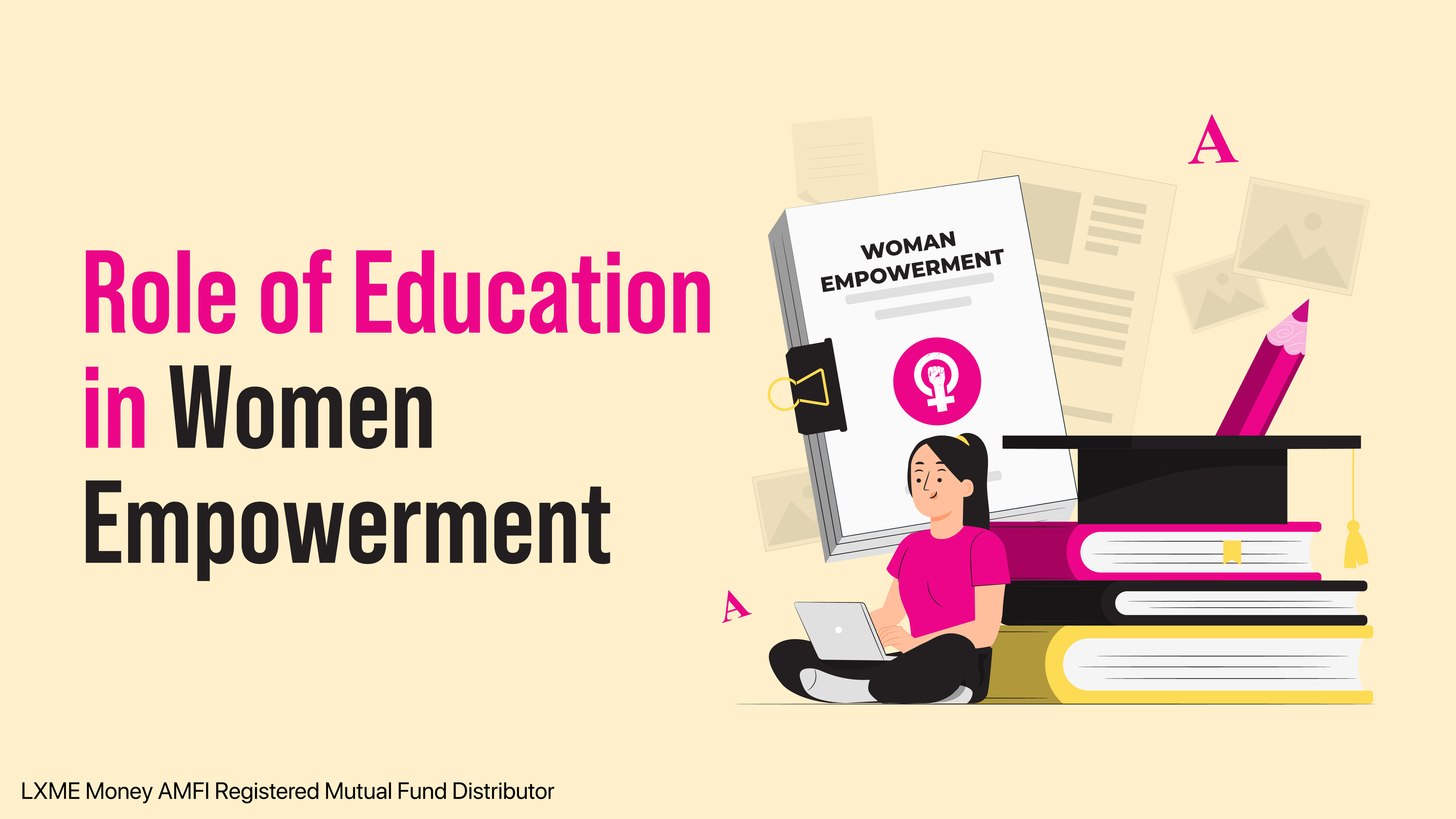Embark on a journey of smart education planning for your child with our comprehensive guide. In ‘How to Plan for Child Education‘ on LXME, discover practical strategies and insights to ensure a bright academic future. Let’s navigate the path of educational preparedness together.
Moms are their child’s biggest cheerleaders. According to the LXME Women & Money Power Report 2022, 75% of moms are highly involved in their child’s education And 1/4th of their income is spent on education fees. But moms, did you know that on average, education costs rise at a rate of 8-10% per annum every year. Crazy, right? But don’t worry!
The first step to proper education planning is Financial Planning! You can achieve your goal of giving your child the best education by effectively planning and managing your money.
Child education planning means planning money for your child’s education. So that your child can pursue his or her educational goals without any financial limitations. It also instills discipline in terms of investing money and taking baby steps toward achieving your goals.
5 steps you can follow to start your child’s Education Plan
1. Make a note of all the information needed.
You need to consider 4 Factors while planning for your child’s education
(i) Child’s Age and admission age: This will help you in determining the time period for your goal. For example, your child’s current age is 2 years and you’re planning for higher education at the age of 18 years. Then, the time period of investment will be 18 years – 2 years = 16 years.
(ii) Current cost of education: Are you planning for your child’s school fees or an undergraduate program or post-graduate program? Are you planning to send them to top schools in India or abroad? Which course interests your child the most? By answering these questions, you can calculate the current cost of education. Let’s suppose, it’s 15,00,000 Lakhs
(iii) Inflation rate: Inflation is skyrocketing! Simply put, it refers to a rise in the prices of goods and services. As a result, the price of education won’t be the same as it is right now. It will also rise in line with inflation, affecting your goal amount. Therefore, it’s crucial to account for inflation of about 8–10% p.a. while planning for your child’s education.
(iv) Expected rate of return: This can be determined based on your risk appetite and the type of investment option you’re planning to invest. Let’s say, it’s 15%p.a.
Does it sound complicated? We’ve got you covered
2. Calculate the amount you need to invest.
You can use LXME’s Child Education Planning Calculator, it’s very easy and quick to use. You just need to enter the values and click on the calculate button.
3. Open an Investment Account with LXME to start investing.
It will just take 5 min to open an investment account, go here to get started
4. Invest money
If your goal is for the short term (less than 3 years), you can look for investment options like Debt Mutual Funds, FDs, RDs, etc and if your goal is for the long term (over 3 years), you can opt for various long-term investment options like Equity mutual funds, equity ETFs, gold bonds and mutual funds, etc! To generate long-term gains that beat inflation, you may devote a sizable chunk to equity funds.
You can invest in your child’s education as per your goal in the LXME’s Child Education Plan.
5. Track your progress
Revisit your plan every year to see whether you are on track. In case there are changes in your goals, you can change your investment plan accordingly. For example, you were earlier planning for an undergraduate course in India, but after some years, your child wants to go abroad for further studies.
Why should you not solely rely on education loans?
It’s better to start early, even if it’s with small amounts, as it gives you a direction towards your child’s future. In case you face any shortfall in your child’s education fund in the future, then you can consider availing an education loan for the balance amount. By doing this, you will avoid paying any unnecessary interest on these loans.
Particulars | Public Provident Fund | Sukanya Samriddhi Yojana | LXME’s Child Education Plan |
Investment per year | ₹1 Lakh | ₹1 Lakh | ₹1 Lakh |
Rate of Interest/ Rate of Return | 7.10% | 7.60% | 15%* |
No. of years | 15 years | 15 years | 15 years |
Indicative Value after 15 years | ₹27.12 Lakhs | ₹28.32 Lakhs | ₹56.85 Lakhs* |
FAQs – Common Questions on How To Plan For Child Education
How Do You Plan a Child’s Education?
-Begin early, understanding future educational needs.
-Develop a personalized savings plan.
-Explore investment options for long-term growth.
-Stay informed about educational costs and inflation trends.
Which Is the Best Child Education Plan?
– Choose a plan aligning with financial goals and risk tolerance.
– Explore education-focused tools like 529 plans.
– Check out LXME’s blog for insights into crafting the ideal child education plan.
How Do I Plan for My Future Child?
– Anticipate future expenses, including education.
– Establish a financial safety net and consider insurance.
– Explore LXME’s guide for a comprehensive approach to planning your future child’s education.
Why should you go for LXME’s Child Education Plan?
With PPF and SSY you will generate approx 27.12 lakh and 28.32 lakh whereas with LXME Funds, you will be targeting almost double the amount compared to PPF or SSY that is 56.85 Lakhs(Approx).
To stay connected with LXME and access inspiring content, follow us on Instagram and subscribe to our YouTube channel.
New Investor? Request a Callback.
Fill in your details and we will guide you at every step
other blogs

Lifestyle Parenting May 20, 2024
12 Pregnancy Tips for First Time Moms
Mommies-to-be, excited to enter this new and exciting phase of your life!? A mini-you will soon roam around this world and you’ll absolutely love them– no conditions attached. We understand that pregnancy tips for brand-new moms can sometimes sound like advice in an alien language. That’s why we are sharing down-to-earth, money-minded first time pregnancy … 12 Pregnancy Tips for First Time Moms

Education April 30, 2024
Role of Education in Women Empowerment
Hey there, ladies! Let’s talk about something super exciting – the transformative power of education in our empowerment journey. We all know education is important, but have you ever stopped to think about how it can change the game for us? The Importance of Education in Women Empowerment: Economic Independence: Listen up, ladies! Education is … Role of Education in Women Empowerment

Career Parenting April 11, 2024
13 Ways to Make Money as a Stay-At-Home Mom
Hello Wonder Woman! We know being a stay-at-home mom is one of the toughest jobs out there. From managing the household to keeping the kids in line, you’re a real-life superhero! But let’s be honest, with all that multi-tasking, finding time to earn a little ‘mom money’ on the side can feel impossible. Well, don’t … 13 Ways to Make Money as a Stay-At-Home Mom









